How to Build a Winning Lower Sales Funnel: The Ultimate Guide
Tara Malone
Updated for 2022
After working late nights for weeks on end, your brand-new online course is finally ready!
But when you launch your course, the results are totally underwhelming. Very few, if any, of your subscribers actually purchase your course. You earn next to nothing, and no one seems interested.
Sound familiar? If this has happened to you, don’t beat yourself up over it.
The truth is, it happens to most entrepreneurs at some point. And don’t worry, the problem is probably not your course.
It’s more likely that your audience isn’t ready to buy a course to address their pain point just yet.
But if they’re not ready now, just when will they be ready? You can’t be waiting around for them forever.
Fortunately, there are ways you can encourage your subscribers and followers to take action without being pushy.
And the best place to encourage your leads to purchase your course is your lower sales funnel.
That’s why this post is all about the lower sales funnel and how to utilize it effectively so you can convert more leads into customers.
Let’s get started!
What Is the Lower Sales Funnel?
Before we dive into the lower funnel, we need examine its place in the sales funnel, also known as the marketing or lead generation funnel.
Basically, the sales funnel is a marketing concept that depicts the various stages of the customer journey. Each part of the funnel relates to a different stage of the customer journey, as this diagram shows:
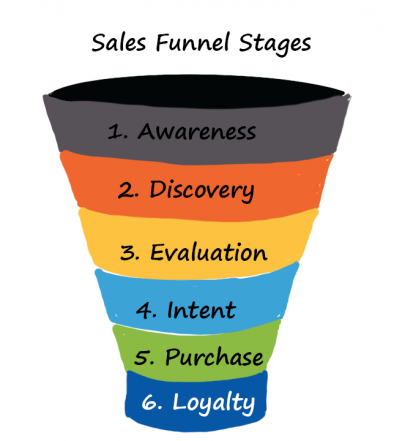
We use a funnel because it’s widest at the top, and narrowest at the bottom. This represents the fact that only a minority of people who enter a sales funnel will actually become paying customers.
People in this stage of the funnel have some interest in your offerings, but are not ready to buy yet. Only the most qualified leads will move further down the funnel, while the others will get filtered out.
The people who make it all the way to your lower sales funnel are the most qualified leads. They are the most likely to become customers if you can win them over.
The different sales funnel stages can be divided into three main categories:
Upper Funnel (AKA Top of the Funnel)
The point of the upper funnel is to pique the interest of new visitors to your website.
It corresponds to the Awareness stage of the customer journey. This is where you raise your prospective customers’ awareness of your company and what you offer. You need to educate your prospects on your business, your offerings, and on what sets you apart from your competitors.
Most of the time, your prospects will learn all of this by exploring your company website or blog. They likely discovered your site after conducting a Google search, or seeing one of your Facebook ads or social media posts.
Prospects who are in the upper funnel are not ready to buy, not by a long shot. This means you need to avoid pitching them your services so they won’t run the other way.
Instead, you need to share useful information that addresses the problem your ideal customer is facing. You can do this by utilizing content such as blog posts, social media posts or ads, or videos.
Your goal here is to make prospective customers aware of your company and your offerings by providing extremely valuable content that addresses their needs.
Mid-Funnel (AKA Middle of the Funnel)
The middle funnel is where your most engaged prospects are transformed into qualified leads. This means they’re likely to become future buyers.
The middle of the funnel corresponds to the Discovery and Evaluation stages of the customer journey. Prospects in the Discovery phase have taken an interest in your products and services and are eager to learn more. However, they aren’t committed to your brand just yet. Most likely, they’re also researching your competitors to find out what solutions they’re offering.
This is where you share even more valuable content that addresses the problem they’re looking to solve. Your goal is to attract them to your brand and encourage them to move to the next stage.
Some types of content commonly used in this stage are blog posts, infographics, videos, email newsletters, and guides.
If you’re successful, your prospect will move into the Evaluation stage. This is where they begin to focus more on your company and your products and services. They are looking to see if you’re the best person to help them solve their problem, but aren’t ready to buy from you just yet.
To encourage them to continue through the funnel, you need to deliver more valuable content and focus on lead nurturing. Some of the best ways to accomplish this is by using email campaigns, newsletters, free email courses, or free trials.
Lower Funnel (AKA Bottom of the Funnel)
The lower funnel is the stage where you have finally have the potential to make a sale. Only your most qualified leads will make it to the bottom of the funnel. These are the ones that are most likely to buy from you.
Prospects who reach the lower funnel know they want to purchase the service or product that will help them address their pain point. But they’re still trying to decide if they should make that purchase from you or from one of your competitors.
The lower funnel encompasses the Intent and Purchase stages of the customer journey. Prospects in the Intent stage show an interest in making a purchase but haven’t taken action just yet. How do you know they’re interested?
Usually, they show that they’re interested by interacting with your site or product in some way. They might watch a demo, sign up for a free trial, or add something to their cart.
When a prospect takes these actions, they often have an intention to buy but still want to make sure the product is a good fit and falls into their price range. When they reach this point, you have a prime opportunity to tell them why your product is the best option for them.
The final stage of the sales funnel is the Purchase stage. This is when your customers are finally ready to buy from you.
Since your leads’ intent to buy is clear in the Purchase stage, you are now free to pitch them directly. When you make that direct pitch, be sure to focus on how your product or service will benefit them and help them solve the problem they’re facing. You need to convince them that what you offer is worth spending their money on.
Just how do you convince them? You can make a compelling case for your product by effectively utilizing bottom-of-the-funnel content to win them over. Some effective types of lower funnel content include:
- Customer stories and testimonials
- Case studies
- Product pages
- Special offers
- Product trainings
- Package bundles
- Free trials
It’s important to remember that your lower funnel content should demonstrate to prospects why your solution is the best one for them.
Now that we’ve reviewed the different sales funnel stages, let’s talk about marketing for each stage.
Since each stage of the sales funnel has a different function, different marketing techniques are needed for each stage. The tactics that work for the upper funnel are totally different from the ones that work for the lower funnel.
With that in mind, let’s explore some effective lower funnel marketing tactics.
Effective Lower Sales Funnel Marketing Tactics
Once your prospects arrive in your lower funnel, your goal is to motivate them to actually purchase the product or service you’re offering them.
But how do you motivate them without seeming pushy?
You do it indirectly by demonstrating that your product or service is the best one for solving the problem they’re facing.
Here are six of the best lower funnel strategies and tactics you can use to win over more customers.
1) Organize Product Demos
One of the most powerful lower funnel strategies is to organize a product demo. Put simply, a product demo is when you give prospects a tour of your service, product, or solution so they can see just how amazing it is for themselves.
This gives them the opportunity to try out your solution without having to hand over their credit card information. This means it’s a totally risk-free way for potential customers to see how your offerings perform.
There are a variety of different ways you can demo your solution. Here are a few of the most common ones:
- Show prospects how your product works
- Let a small group of prospects try out samples of your product
- Let prospects engage with a large, expensive product for free
The approach that you take will vary depending on what you’re actually offering. E-commerce companies might use augmented reality so customers can see how their merchandise would look in their home, or how a particular makeup product would suit them.
Or an Saas company might arrange a presentation of their software solution so potential customers can see how to use the various features.
Regardless of how you go about it, your goal is to show prospects the ins and outs of your solution and why it’s the one they should invest their money in.
During the demo, also be sure to highlight actual customers who benefitted from your product or solution. Bonus points if you can recruit some of these satisfied customers to actually attend your event and speak about their personal experience with your business.
2) Offer Free Trials
Another excellent lower funnel marketing strategy is to give prospects the option of signing up for a free trial. This approach is especially common with Saas (software as a service) products, so customers can try them out risk-free before deciding to invest their money.
There are a number of benefits to offering free trials. For one, with a free trial, your prospects get to have hands-on experience with your product. This lets them see what they get, how it works, and if it’s the best solution for the problem they’re facing.
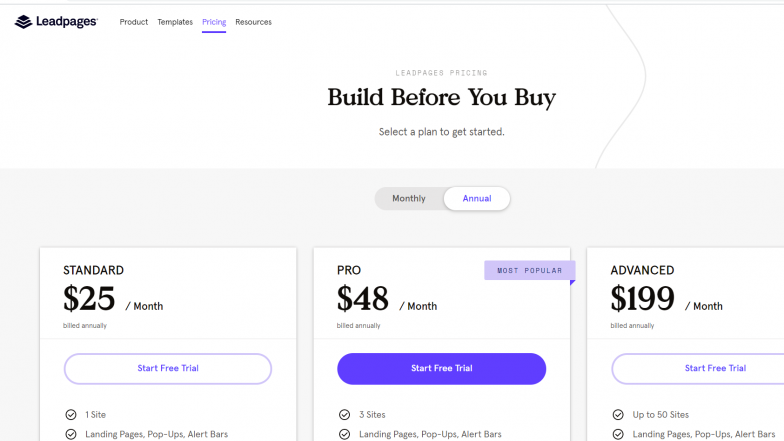
Free trials are also a relatively simple strategy for Saas companies to implement, because the software is already all set up and ready to go. You’ve done all the hard work of designing your product already, so all you need to do is give them access to your software.
In addition, it helps reduce the uncertainty that can hold your leads back from becoming customers. Since they get to try out the product and see how it works for themselves, they have the opportunity to become more informed about it, which can help them feel comfortable enough to move forward with the purchase.
3) Schedule Webinars, Presentations, and Live Q&A Sessions
Prospects who make it to your lower funnel are so close to making a final purchase decision. They’re aware of what’s causing them pain, and have decided to invest in a solution to fix it. Yet, they’re still experiencing some uncertainty as to whether the solution you offer is really the best one for them, and if they’re willing to spend money on it.
Another extremely effective way to win over customers at this stage is to interact with them personally, either one-on-one or in a select group. This can be done by scheduling an in-person meeting, a webinar, or a Q&A session.
During your meeting or webinar, be sure your presentation speaks directly to your ideal customer. You need to tap into their pain points and clearly express the benefits your solution offers them. Also include evidence to back up your claims whenever possible, preferably in the form of visuals or infographics for increased engagement.
In addition, be sure to give them an opportunity to express any questions or concerns they might have. If you’re hosting a webinar, ask your audience to submit questions in advance over social media and then address the most common ones at the end of your presentation. Studies show that 92 percent of webinar attendees want a Q&A session at the end of a webinar, so make sure you don’t skip this part!
By effectively addressing their questions and concerns, you can reduce their uncertainty and increase the chance of converting them to paying customers.
4) Leverage Customer Case Studies and Testimonials
When a prospect in your lower funnel hears about the experiences of your satisfied customers, it may just be the catalyst they need to take action and buy your product. That’s why you should incorporate the experiences of your happy customers wherever possible.
Be sure to include customer testimonials on your website and product pages, as well as in any webinars or presentations you give related to your solution. Make sure that the testimonials are highly specific and include as much data as possible.
Here are some examples of real-life customer testimonials to illustrate what I mean:
In addition to testimonials, consider developing customer case studies, which are some of the best forms of social proof for adding credibility to your business and offerings.
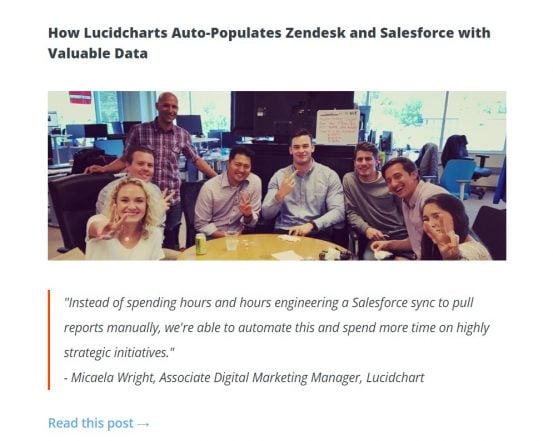
Case studies are more in-depth versions of testimonials, which typically follow this format:
- They introduce your customer, which may be either a person or a business
- Next, they explain a major problem your customer is facing and their need for a solution
- They explain how the customer decided to go with your solution
- Then they cover the implementation process
- Finally, they share how your product benefitted your customer, using data and numbers as much as possible.
Here are a couple of examples of customer case studies from automation experts Zapier:
- InVision Saves 10 Hours Each Week with Automated Workflows
- Hotjar Creates Databases Automatically for Accounting and Marketing
When you’ve compiled your testimonials and case studies, be sure to display them prominently on your website and marketing materials so that your prospects can’t miss them. These forms of social proof may be just what you need to win them over, so be sure to make the most of them.
5) Make Use of Special Offers/Discounts
Don’t underestimate the power of special offers and discounts in helping convince your leads to purchase your product or service. In many cases, a special or limited-time offer can give your prospects the final push they need to make a sale.
For a special offer to work, it needs to be compelling and tap into your prospect’s sense of FOMO (fear of missing out). You want them to feel that they’ll be missing out on something really special if they pass up this offer. It’s a good practice to put a clear deadline on the offer to create this sense of urgency.
There are a number of ways you can deliver your special offer, but two of the most common methods include email marketing campaigns and social media ads.
Every major email marketing provider, including MailChimp, ConvertKit, and Kajabi, gives you the option to segment your list. You can create a special segment of your email list for prospects who have reached the lower funnel and design emails specifically geared to them.
These emails might deliver sales announcements or limited-time offers that are compelling and motivate them to take action.
You can also make use of paid social media ads that target your ideal customer avatar and deliver special offers that are relevant to them. And don’t limit yourself to Facebook ads, but take into account which platforms your ideal customer frequents. If your customers are most active on Instagram or Twitter, then it makes sense to advertise your special deals or offers on those platforms instead.
Although deals and special offers are a great incentive, you want to approach them strategically. If you use them too often, you can risk losing money or decreasing the value of your products in your customers’ minds. You want any offers to really align with your brand and to truly offer amazing value for your customers.
If you feel that special offers don’t make sense for your brand or will result in you losing money, you might consider using a freebie instead. Which brings us to the final strategy…
6) Offer a Free Course or Other Freebie
If you don’t want to lower your price but still want to motivate prospects to purchase your product, you might want to offer a freebie instead.
The type of freebie you choose can vary depending on the nature of your business. If you own an e-commerce business, for example, you can offer free shipping or same-day delivery for customers who purchase over $50 of merchandise. Or if you sell beauty products, you might throw in a free sample of perfume, lipstick, or makeup removing cleanser.
On the other hand, if you’re a digital course creator, offering a free course can be a powerful incentive. A free course needs to provide value, but it shouldn’t be nearly as in-depth as the courses you sell. Instead, it should give them a taste of what you offer and whet their appetite to learn more.
Some real-life examples of free courses are these ones offered by CoSchedule Academy:
- Editorial Calendar Onboarding for Individuals and Startups, and,
- How to Create a Marketing Plan That Will Make You 5x More Successful.
Another option is to offer the first module of one of your existing courses for free. The advantage of this approach is that you don’t have to create a whole new resource, but you can use a segment from a course that you’ve already created.
In addition, offering a free module of your course lets your prospects get a clear sense of what the course entails and what they’re getting, much like a free trial does. This way, they get to actually try out the course and if they like what they see, they will likely feel more comfortable in making the decision to invest in it.
Now that we’ve covered some of the best lower funnel marketing tactics, let’s take a look at some real-life companies who are winning at lower funnel marketing.
6 Amazing Lower Funnel Marketing Examples
If you’re in need of some inspiration, check out these excellent examples of lower funnel marketing tactics in action.
Product Demo: Sephora’s Virtual Artist Product Try-On Feature
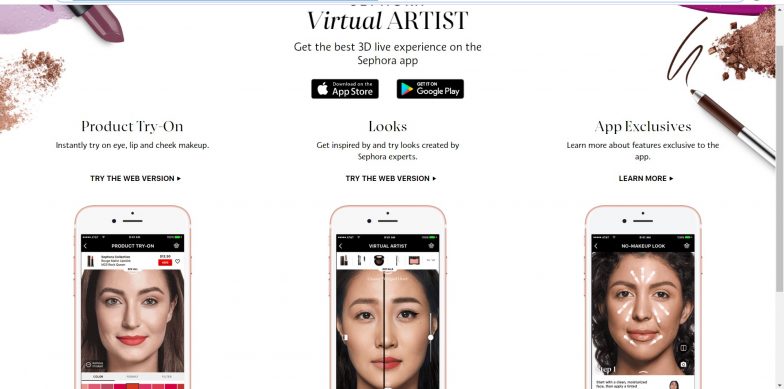
Beauty giant Sephora is one example of a company that has mastered the product demo. Sephora customers and prospects can use the company’s Virtual Artist Tool to virtually try on hundreds of different cosmetics so they can get a sense of how a particular product will look on them.
One of the main challenges that customers have when ordering makeup online is finding a shade that complements their skin tone. When a shade doesn’t work for them, they have to go through the hassle of returning the product, which no one likes to deal with.
Sephora’s Virtual Try On feature gives customers a much better sense of how a specific product will look on them and also reduces their risk of purchasing a product that won’t be a match, which is extremely appealing for customers. And if a customer tries a product and likes what they see, that will likely be enough to motivate them to go ahead and make a purchase.
Free Trial: Leadpages’s 14-Day Free Trial
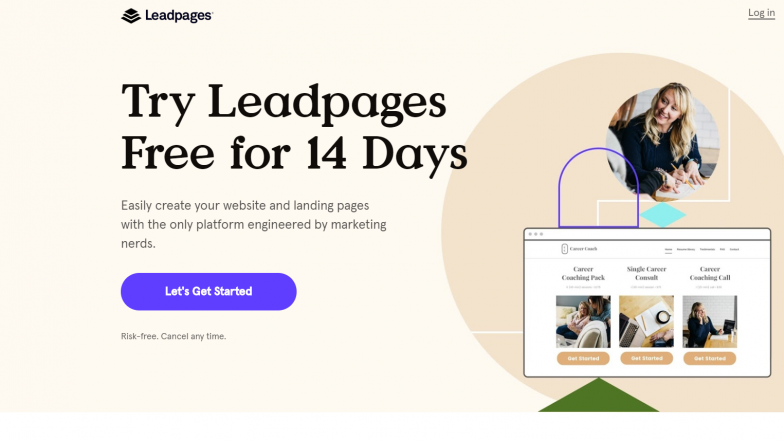
Landing page builder and lead generation software provider Leadpages offers a 14-day free trial for all new users. While many software companies offer free trials, LeadPages goes above and beyond by giving people who sign up for the trial full access to all of Leadpages’ features.
In addition to that, prospects can use the Site Builder to design a website, create and publish an unlimited number of landing pages, and try out their library of over 2000 templates. They also have access to an in-depth conversion toolkit which gives them a ton of resources to help them optimize their landing pages to increase their conversion rate.
This 14-day free trial gives prospects plenty of time to try out all of Leadpages’s features risk-free and to make an informed decision as to whether this is the landing page builder that they want to invest in.
Webinar: Amy Porterfield’s How to Start and Grow an Email List Masterclass
Leading online marketing expert Amy Porterfield has mastered the art of the webinar for winning over leads. One of her successful webinars is her How to Start and Grow an Email List Masterclass, which she primarily advertises using Facebook ads. It’s geared to bloggers and small business owners who are looking to grow their email lists (and in some cases, start an email list from scratch).
After prospects sign up for her webinar, they receive a confirmation email in which Amy promises them that they will…
- learn everything they need to know to start and/or grow their email lists,
- have a clear sense of the steps they need to take, and
- get exclusive access to the top list-building strategies available.
In return, Amy requests that attendees:
- Show up,
- Stick around until the end,
- Print out the included workbook and have it in front of them.
Attendees that follow these steps eventually learn about her List Builder’s Society online course. They are also given a discount if they sign up during a limited time period.
In addition to providing attendees with great information, Amy also addresses their questions and includes a limited-time offer to motivate them to take action.
Special Offer: SmartBloggers’ Secret New Year’s Flash Sale
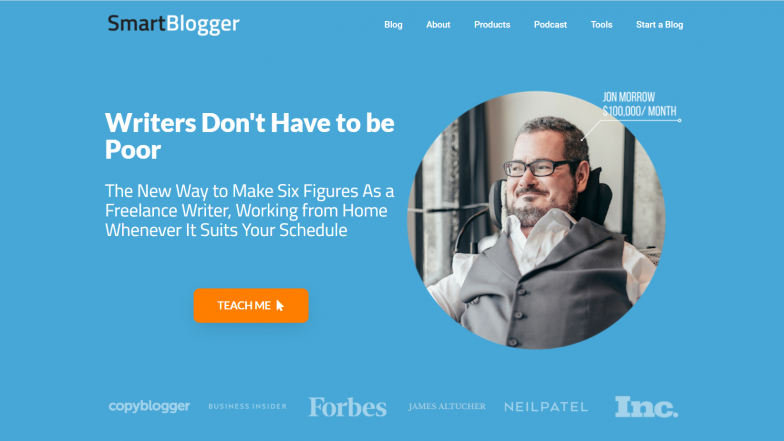
A great example of a limited-edition special offer is SmartBlogger’s New Year’s Flash Sale. At the very beginning of 2020 SmartBlogger founder Jon Morrow emailed his subscribers about an incredible offer to start off the new year.
His offer – a whopping $1,265 discount on SmartBloggers’s leading training program, Serious Bloggers Only. This program is an intensive system that teaches new bloggers everything they need to know to create, launch, grow, and monetize their blogs. It contains 36 minicourses that contain easy-to-follow guides, worksheets, videos, and much more. This program is incredible on its own, but the cost is likely to be a deterrent to some prospects.
By offering this amazing discount, Jon makes the course much more affordable and much less of a risk for prospects. Jon also created a sense of urgency because this offer was only around for 48 hours before it expired. This made it even more effective in convincing prospects to purchase the course.
Free Course – HubSpot Academy Content Marketing Certification
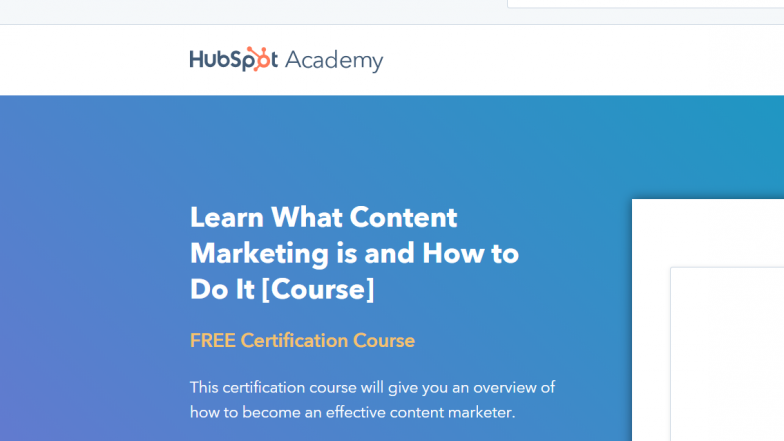
When it comes to free courses, HubSpot’s Content Marketing Certification is hard to beat. This free certification course teaches you what content marketing is and how to implement it effectively in your business. It’s a 6-hour course made up of 12 lessons, and includes 52 videos about content marketing and 11 quizzes. The modules cover topics like how to create a content strategy, and how to effectively promote your content. As an added plus, those who complete this course get a HubSpot certification to add to their websites and social media profiles.
The amount of information packed into this free course is truly impressive. Prospects who complete this course have a strong foundation in content marketing, though there’s still plenty of room for them to develop their content marketing skills. By offering such a comprehensive free course, HubSpot gives prospects a compelling case for purchasing another of their courses to develop even more expertise in content marketing.
Those are just some especially effective examples of how to optimize your lower marketing funnel to turn your prospects into paying customers. Think of them as inspiration as you begin to develop your own lower funnel marketing plan.
Speaking of which…
Ready to Create Your Winning Lower Sales Funnel?
By now you should have a much clearer understanding of what the lower funnel is and what types of content are most effective at this stage.
But now it’s time to think about how to create an effective lower funnel for your own business. Here’s what we recommend for developing a plan to create a highly optimized lower funnel for your business.
- Check out your competitors’ lower funnels: It’s always a smart move to check out what your successful competitors are doing. Chances are if they’ve made a success of their business, they have a highly effective lower funnel. Checking out your competitors can give you a sense of what lower funnel tactics work well for your business.
- Pick 2 to 3 tactics to focus on for your business: Next, choose a couple of these promising tactics to focus on. You don’t want to overwhelm yourself, so limit yourself to 2 or 3 to test out with your ideal customers.
- Optimize your content accordingly: Now it’s time to optimize your content so that it’s both valuable and engaging for your prospects. Consider what type of content works best with the tactics you’re using and then formulate a plan to develop that content.
- Test and refine: After your content is ready, it’s testing time! Try to recruit a group of beta users or organize a focus group to test out some of your content. If creating a focus group isn’t an option, you can also set up A/B tests. These will help you measure what lower funnel content is most effective.
By following these steps, you will be well on your way to developing an effective lower funnel that converts more leads into happy customers.